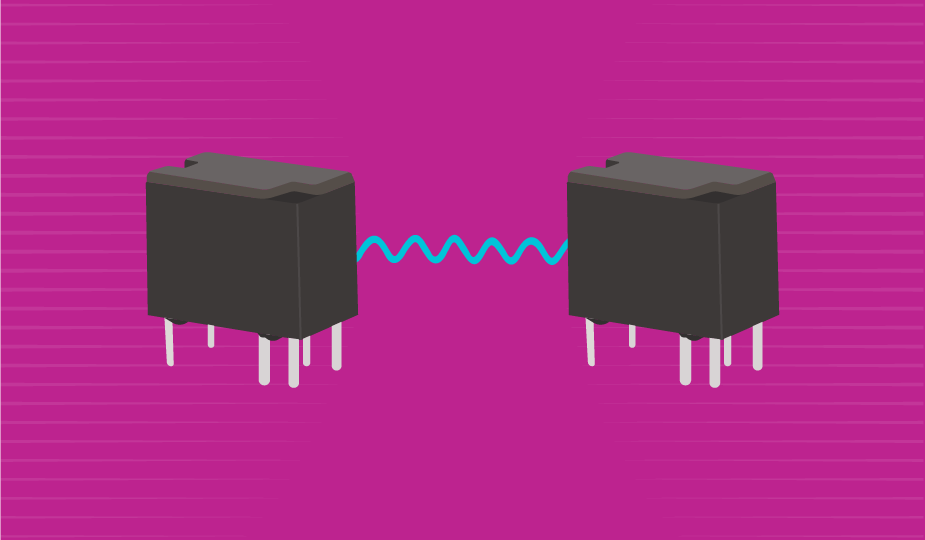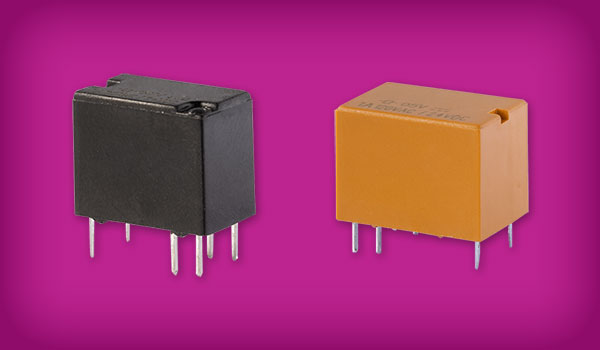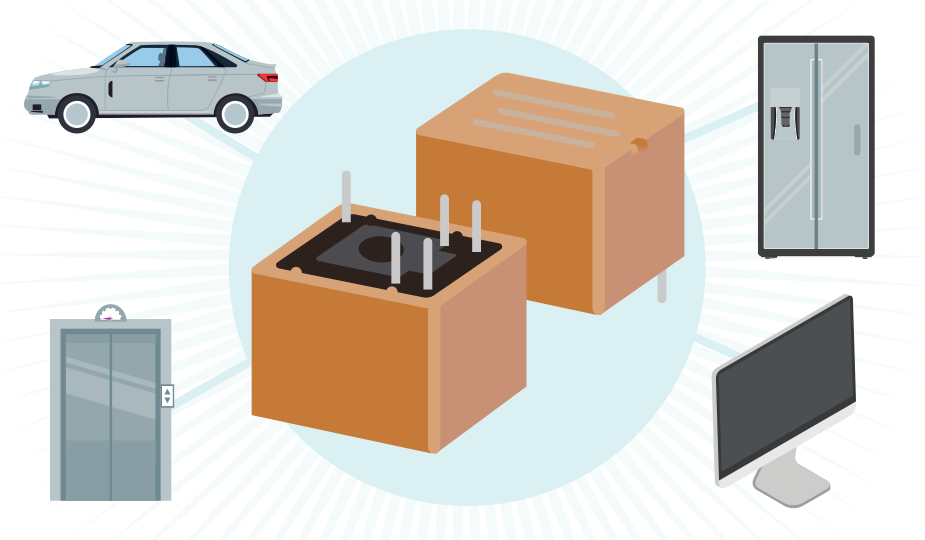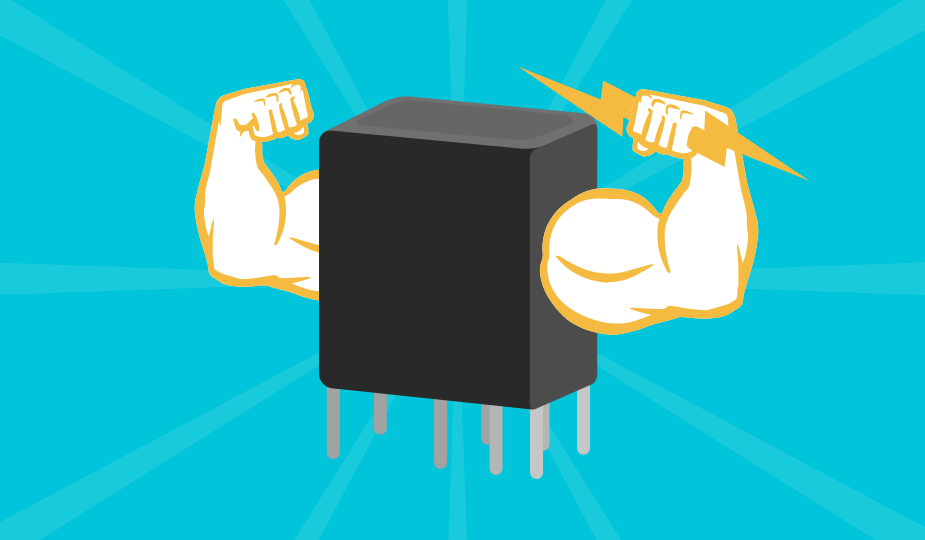An Introduction to Signal Relays

Relays are some of the oldest, most useful, and most used electronic devices because they offer safe, remote control of a circuit from a distance. Despite having been around since 1835, relays continue to be employed in countless ways. Some of the very first computers were built by wiring a large number of relays together to perform Boolean logic (on or off) functions. Signal relays fall under the broad category of “relays”, but they are unique and have specific uses. Signal relays in particular fill an important niche in communications. For a general overview of relays, see also our What You Need to Know About Relays blog.
What are Signal Relays?
Signal relays have internal moving parts, or contacts, that move between open and closed positions as the result of a magnetic force which is produced by a control current that runs in a coil near the contacts. The magnetic field moves an armature which travels to cause contact closure and electrical flow. This is a way for a relatively small signal to control a larger signal.
Signal relays are similar in form and function to power relays, in that they are essentially electrically operated electromechanical switches that control a current in a circuit. The difference is that signal relays operate with low voltage and current ratings and switch low power signals. Current ratings for signal relays are typically under 2 amps with voltage ratings usually between 5 Vdc to 30 Vdc. This is why you may also see them referred to as “low signal relays.”
How do Signal Relays Differ from Regular Relays?
Signal relays are similar in function to other electromechanical relays, except that they are best used for low voltage and current applications. Their contacts are specifically designed for low power. Power relays, that are designed to operate at higher current and voltage levels, are sometimes selected for applications because of their lower cost. However, power relays can corrupt low-power signals, such as in audio or video circuits, turning the cost equation on its head. Learn more about power relays in our blog post, An Introduction to Power Relays.

Signal relays, because of their small power handling, also come in relatively small packages that are perfect for board-mounting, either through hole or surface mount. Their smaller size can also offer somewhat faster switching times.
Signal relays are typically less expensive than solid state relays, are not affected by voltage or current transients, and are not susceptible to EMI/RFI. Matching signal relays to an appropriate circuit also means less heat generation than using solid state relays. As a result, using signal relays does not typically require a thermal management solution in the circuit.
Benefits of Signal Relays
Because of their similar design and operation, using signal relays in a project can offer many of the same benefits as other electromechanical relays. These include:
- Simple design
- Electrical isolation
- Robust operation
- Reduction in costly wiring over a distance
- Multiple packaging/feature options
- Insensitivity to EMI/RFI
Using signal relays that are correctly matched to the power needs of the circuit can also offers these additional benefits:
- Simple operation
- Compact size
- Lower cost
- Mechanical shock resistance
- High insulation between the internal coil and the contacts
Signal Relay Specifications
When deciding on the specific signal relay model to work in your design, there are many factors to consider. Here is a list of some of the terms and definitions related to this:
- Voltage Rating: the maximum voltage that can be switched by the relay, typically expressed in Vdc or Vac.
- Current Rating: the maximum current that can be switched, expressed in Amps.
- Contact Resistance: the resistance, expressed in Ohms, that the relay adds to the load circuit.
- Coil Voltage: the rated control voltage for the relay coil.
- Coil Current: the rated current that the coil takes with the rated coil voltage.
- Contact Form: the switch configuration of the relay (number of poles and normally open or normally closed configuration). Examples include SPDT (1 Form C) and DPDT (2 Form C).
- Contact Rating: indicates current and voltage values for guaranteed performance of the relay, typically expressed as 1 A @ 30 Vdc for example.
- Switching Time: the operating speed of the relay from when control current is applied to when the contacts close, or vice versa.
- Mounting Type: the way the relay will be mounted in the application, typically either through hole or surface mount on the PC board.
- Dielectric Strength: the maximum voltage which can be tolerated by the relay, without damage, for a specified period of time.
- Operating Temperature: the range of temperatures in which a relay can successfully operate.
Steps to Selecting a Signal Relay
The process of selecting the appropriate signal relay for your design is very similar to that of selecting any other electromechanical relay. This begins with identifying the required voltage and current ratings of the relay based on the maximum load that needs to be switched in the circuit. Remember that signal relays, by definition, typically switch 2 A or less.
The next step is to identify the required control voltage and type, either ac or dc, and define the number of poles/circuits that need to be switched, along with whether the circuit/switching arrangement needs to be normally open (NO) or normally closed (NC).
Finally, determine how the device will be mounted in your circuit. Options include panel mount, DIN rail, PCB surface mount, or through hole. Your final list of parameters will allow you to identify a relay that meets the needs of your system but is not over-designed or over-priced.

Common Signal Relay Applications
As we have mentioned, relays have been designed into a variety of applications over the years. Signal relays, due to their low power switching capabilities, are an efficient solution to many products and systems, both commercial and consumer. Some of the applications for signal relays include network devices where long-distance signals require a voltage and current higher than most electronics can handle natively. Signal relays fill that niche in network devices that need quick responsiveness and not as much power as a power relay would offer. Similarly, in settings most people are familiar with, a home or commercial thermostat runs at a relatively low voltage and current yet needs to push that signal more than a few inches to the furnace or AC. In this case, a signal relay can take the small, low-power control signal and use it to send the message across the home or office to where the condenser can take action.
Summary
Despite the sophistication of many of the electronic systems being designed these days, or perhaps because of that sophistication, engineering designers are often faced with the need for complete electrical isolation between a switching signal and the signal that needs to be switched. Safe control of current and voltage from a distance is critical.
Signal relays are widely used across both consumer and industrial products and systems to safely switch power in many types of circuits. Once you determine the requirements of your design, Same Sky has a line of signal relays to address your low-level current switching needs.



